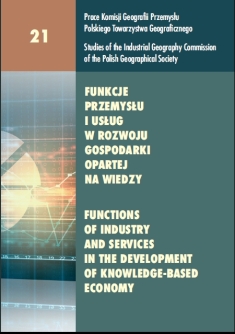Energy-Efficient and Passive Houses as the Inevitable Future of the Construction Industry in Poland
DOI:
https://doi.org/10.24917/20801653.21.10Keywords:
low-energy, energy-efficient and passive constructionAbstract
The study presents an analysis of the possibility of implementing in Poland the low-energy- especially passive - construction techniques in Poland, which according to recommendations ofEU directive is supposed to become a standard in all EU member countries until the end of 2012. Thelevel of advancement and experience in that kind of building in West Europe countries, especiallyGermany, Austria and Scandinavian countries, were described. Also, the possibilities and barriers ofimplementing it in Poland were shown, mainly in the aspect of financial impediments being the resultof current lack of programs funding the low-energy construction and the deficiency of cheap domestictechnological and material solutions, as well as in the aspect of failure to include that kind of buildingin the planning documents.The author paid attention to the need for the cooperation of scientists and researches with practitioners,i.e. architects, designers, building materials’ producers and investors in this field. As the symptoms oftechnological and materials searches of new solutions and cooperation among above mentioned professionsthere were given examples from Małopolska region.Downloads
Metrics
References
Celadyn, W. (2010). Architektura energooszczędna w planowaniu przestrzennym. Czasopismo Techniczne. Architektura, 18, 111–120.
Fedorczak-Cisak. M., Furtak. M. (2012). Małopolskie Laboratorium Budownictwa Pasywnego. Czasopismo Techniczne. Budownictwo, 3, 93–103.
Feist, W., Mühzenberg, U., Thumulla, J., Schulze Darup, B. (2009). Podstawy budownictwa pasywnego. Gdańsk: Polski Instytut Budownictwa Pasywnego.
Kaczkowska, A. (2009). Dom pasywny. Krosno: Wydawnictwo KaBe.
Kasperkiewicz, K. (2005). Wybrane zagadnienia oceny i projektowania energooszczędnych budynków mieszkalnych. Warszawa: Instytut Techniki Budowlanej.
Konsultacje programu dopłat do kredytów na domy energooszczędne, Materiały prasowe NFOŚiGW, 18 maja 2012 r., Warszawa.
Piotrowski, R., Dominiak, P. (2012). Budowa domu pasywnego krok po kroku. Warszawa: Wydawnictwo Przewodnik Budowlany.
Repelewicz, M. (2011). Styropian jako materiał konstrukcyjny. Czasopismo Techniczne. Architektura, 11, 225–232.
Stachowicz, A., Fedorczak-Cisak, M. (2007). Niskoenergetyczne budynki – analiza zużycia energii w całym cyklu istnienia budynku. Czasopismo Techniczne. Budownictwo, 4 (1–B), 133–141.
Węglarz, A., Stępień, R. (2011). Dom Pasywny. Warszawa: Instytut na Rzecz Ekorozwoju, przy współpracy Krajowej Agencji Poszanowania Energii S.A.
Wnuk, R. (2012). Budowa domu pasywnego w praktyce. Warszawa: Wydawnictwo Przewodnik Budowlany.
Wnuk, R. (2007). Instalacje w domu pasywnym i energooszczędnym. Warszawa: Wydawnictwo Przewodnik Budowlany.
Dyrektywa Parlamentu Europejskiego i Rady 2010/31/UE z dnia 19 maja 2010 roku w sprawie charakterystyki energetycznej budynków, Dz.U. L 153 z 18.6.2010.
Dyrektywa Parlamentu Europejskiego i Rady 2009/28/WE z dnia 23 kwietnia 2009 r. w sprawie promowania stosowania energii ze źródeł odnawialnych, Dz.U. L 140 z 5.6.2009.
Protokół z Kioto do Ramowej konwencji Narodów Zjednoczonych w sprawie zmian klimatu, sporządzony w Kioto dnia 11 grudnia 1997 r., Dz.U.05.203.1684.
Ramowa konwencja Narodów Zjednoczonych w sprawie zmian klimatu UNFCCC z 1992 r., Dz.U.96.53.238.
Ustawa z dnia 27 sierpnia 2009 r. o zmianie ustawy – Prawo budowlane oraz ustawy o gospodarce nieruchomościami, Dz.U.2009 nr 161 poz.1279.
Ustawa z dnia 27 marca 2003 r. o planowaniu i zagospodarowaniu przestrzennym, Dz.U. Nr 80 poz. 717, z późn. zm.
Ustawa z dnia 7 lipca 1994 r. Prawo budowlane, Dz.U. Nr 243 poz. 1623.
www.archisystem.pl
www.architekturapasywna.pl
www.cbp.put.poznan.pl
www.cepheus.de
www.domy-pasywne.pl
www.ibp.com.pl
www.itb.pl.
www.m3system.pl
www.nfosigw.gov.pl
www.passivehouse-international.org
www.passipedia.passiv
Downloads
Published
How to Cite
Issue
Section
License
Articles are published under the terms of the Creative Commons License (CC BY-ND 4.0; Attribution– NoDerivs).

